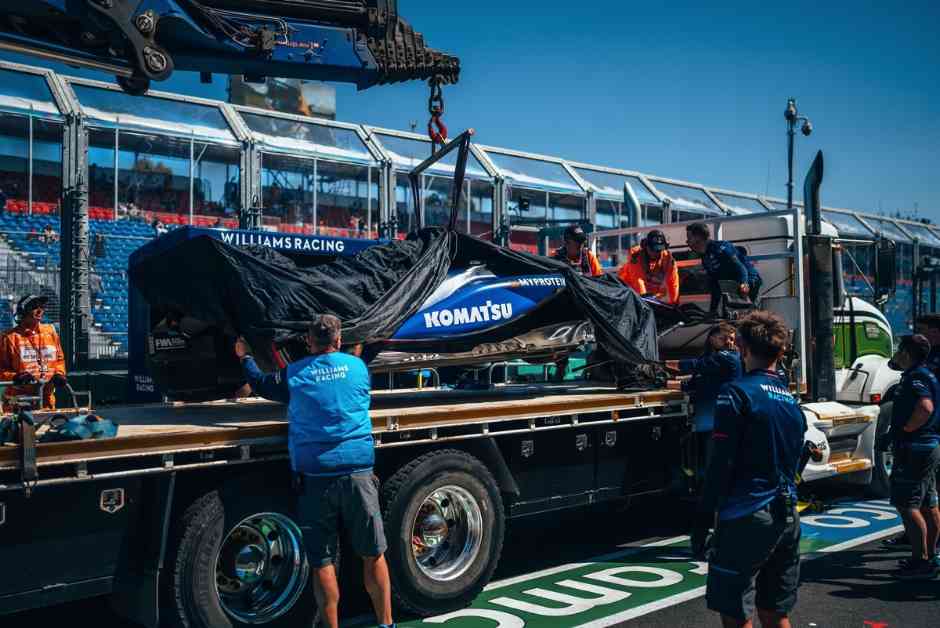Alex Albon Reveals Self-Fulfilling Injury Causes in Williams’s 2024 F1 Crash-Fest
Formula 1 driver Alex Albon has shed light on the “self-fulfilling injury” suffered by Williams during the 2024 season, attributing it to the team’s early season weight-saving measures that ultimately led to increased crash damage. The British team’s FW46 car faced a turbulent season marred by crashes right from the start, with the car initially exceeding the weight limit of 798kg, resulting in a loss of 0.45 seconds per lap before adjustments were made through its development program.
Weighty Decisions and Crash Consequences
Williams’s decision to implement weight-saving measures by using metal parts instead of lighter carbon-fibre components in certain chassis parts, such as suspension elements, proved to be a double-edged sword. While metal parts are quicker to produce and contributed to shedding 14kg from the total chassis weight compared to the previous year, they also resulted in higher forces being exerted on the monocoque in the event of a crash.
The repercussions of these weight-related choices became evident during the Australian Grand Prix practice session when Alex Albon’s crash led to Logan Sargeant being sidelined due to irreparable chassis damage and the unavailability of a spare at the time. Albon highlighted a mix of factors, including driver errors and technical challenges, contributing to the spate of crashes experienced by him, Franco Colapinto, and Sargeant throughout the season.
Insight from Williams’s Chief Engineer
When questioned about the situation, Williams’s chief engineer, Dave Robson, acknowledged the impact of metallic components on the car’s performance, noting that certain parts should have been carbon from the outset. While emphasizing the need for quicker production turnaround times, Robson explained that the transition to carbon components was eventually made to address the chassis load variations caused by heavy impacts.
Robson’s insights shed light on the intricate balance between performance optimization and safety considerations in Formula 1 car design and development. The challenges faced by Williams in the 2024 season serve as a reminder of the complex interplay between engineering decisions, competitive pressures, and unforeseen consequences in the high-stakes world of motorsport.
As the team reflects on the lessons learned from this tumultuous season, the focus shifts towards optimizing performance while ensuring the integrity and safety of the cars on the grid. The delicate dance between innovation and reliability continues to shape the future of Formula 1, with each setback serving as a stepping stone towards greater resilience and success on the track.












